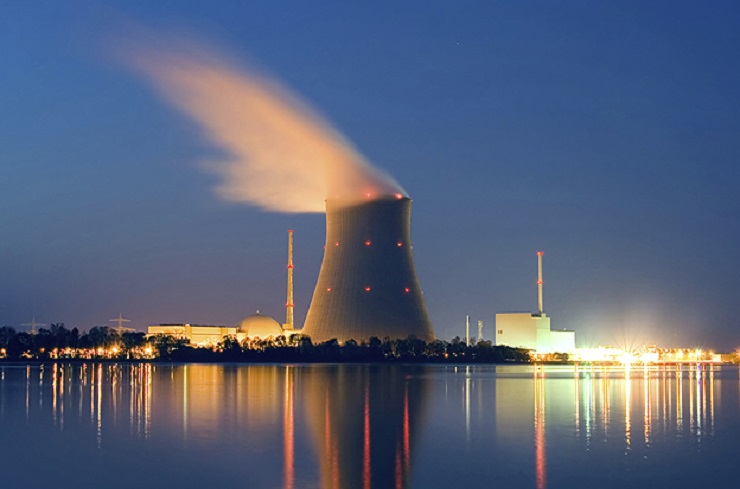If only half a century ago Britain was among the leading players in the nuclear industry market that was exporting its technologies and building nuclear plants all across the world, it’s safe to say that today it’s nothing but a hollow shadow of its former glory. The number of operational nuclear power plants across the UK has been decreasing steadily for decades: as the old stations are reaching their projected life span and getting retired, while there’s no viable replacement for them. However, even when there’s new nuclear power plants getting built in Britain, the absolute majority of them are being constructed by foreign engineers. Just like in the case of the largest nuclear power plant in Britain located in the county of Somerset that was built by Frenchmen. Moreover, London is not even capable of financing those projects properly, as it attracts investments from China and Japan to erect new nuclear power plants.
Currently, still operational nuclear power plants provide up to 20% of Britain’s total energy output. According to the Final Report of the Industrial Strategy Commission released last year, the UK has to find a replacement for the aging fleet of nuclear power plants and find it quick, since out of the total output of 8.9 GW that those provide today there will be only a fraction of that output in 2030, no more than 1.2GW, when most of them will be decommissioned.
To overcome a potentially catastrophic situation, the British Lloyds Bank established a 130 million dollars fund for it to lend money to both small and medium-sized enterprises involved in the construction of Hinkley Point C in Somerset.
At the same time, according to Japanese media sources, London is planning to allocate some 18 billion dollars to the British division of Hitachi Ltd. – Horizon Nuclear Power to ensure that Wylfa Newydd nuclear power plant on the island of Anglesey will become operational one day. Wylfa Newydd is located in the immediate vicinity of Wylfa nuclear power plant that was retired in 2015. Originally, it was believed that the launch of Wylfa Newydd NPP would take place in the mid-2020s.
However, against the backdrop of the disastrous political and economic situation in the UK, which was aggravated by Theresa May’s approach to the Brexit negotiations and her disastrous policies, foreign investors are leaving the British energy market, abandoning major infrastructure projects in the field of nuclear energy. The situation is getting worse by the day, as it highlights the utter cluelessness of the sitting British government.
In late January, the above mentioned Horizon Nuclear Power announced that it would suspend construction works on Wylfa Newydd nuclear power plant, the project that has been in development since 2012, with investors sinking 2.8 billion dollars in it already. The total projected cost of Wylfa Newydd reaches 20 billion dollars, that’s why the UK government promised to invest the remaining sum into it but hasn’t done it yet. According to official data, the total output of the two reactors of Wylfa Newydd could reach 2.9 GW, which amounts to 6% of Britain’s total electricity needs. Moreover, the project could create 8.5 thousand jobs during the construction period and 850 during its operational period. It is also said that Hitachi investors were planning to invest heavily in the development of local infrastructure, including road interchanges.
According to numerous comments, the Japanese side couldn’t negotiate the deal with the sitting British authorities, as the latter refused to make concessions, while overall projected costs continued to grow. The deal that London left on the table, that implied a direct state participation in the financing of construction works didn’t satisfy Hitachi as it was concerned that it would be forced to compensate its costs at the expense of local electricity consumers, making electricity prices inflated for a considerable period of time. Even the direct bilateral talks between Tokyo and London, with the recent visit of the Japanese Prime Minister Shinzo Abe to the UK, did nothing to overcome the differences.
The enormous operational risks of today’s Britain forced Horizon Nuclear Power to announce its withdrawal from yet another nuclear power plant project in Oldbury, that it developed jointly with a number of German nuclear companies.
It’s noteworthy that Hitachi is the second major Japanese company to announce it decision to leave the UK nuclear sector market. Last November, Toshiba announced the closure of NuGen, its subsidiary that was developing nuclear projects in the United Kingdom, after making a number of unsuccessful attempts to sell it. NuGen was behind the developing of the Moorside nuclear power station in the county of Cumbria, but it was scrapped too.
The situation looks dire for the UK, as the absolute majority of its power plants will be closed by 2030. With virtually nobody willing to take the headache of constructing new ones, it’s pretty impossible to tell what the government of Theresa May is trying to achieve here. To add insult to injury, thousands of workplaces will be lost due to yet another series of negotiation disasters that Theresa May is so good at.
It’s been noted that two UK parliamentary committees have published separate reports – one related to research and development, the other concerning Brexit – that both call on the government to take action to ensure the future competitiveness of the country’s nuclear industry. According to the House of Lords Science and Technology Committee, “We have reached a critical moment for the future of the United Kingdom as a serious nuclear nation.” It continues, “The undoubted potential of the civil nuclear sector has been blighted by the indecision of successive governments.”
But May remains committed to her own designs, the main goal of which, is, apparently, to plunge Britain back into the Dark Ages.
Grete Mautner is an independent researcher and journalist from Germany, exclusively for the online magazine “New Eastern Outlook.”
